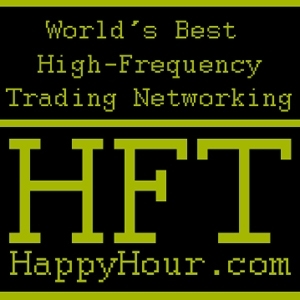In the wild, speed is the difference between killing or being killed, feeding or going hungry. Now more than ever, this is true in the shadowy concrete jungles of the world’s financial markets. Those currently trading who aren’t high-frequency traders, including traders on exchange floors, home day traders, or traders at other institutions, are giving their money away to high-frequency traders (who now make up about half of all market volume).
“By the time the ordinary investor sees a quote, it’s like looking at a star that burned out 50,000 years ago,” Sal Arnuk, co-author of a book critical of high-frequency trading titled Broken Markets, told Wired.
On a basic level high-frequency traders use a combination of hardware and software to see how much someone else is willing to buy or sell a given security for fractions of a second before their competition does. They can then trade accordingly. It’s almost like being able to bet on a horse race from the future; you already know who’s crossed the finish line first.
But the advantage never lasts. It takes ever-increasing amounts of hardware sophistication, software sophistication, power, and money to stay ahead of the game and keep making millions from your competitions’ comparative lack of information.





